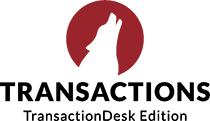
It isn’t often we take time to speak geek, but when we do, it’s because it’s a big deal. After all, if you’re going to make decisions about the software you use throughout your real estate work, it’s important to know what’s happening behind the scenes.
Let’s dive into a common issue these days in businesses of all shapes and sizes: Software sprawl.
First: What is software sprawl?
Software sprawl, sometimes referred to as software-as-a-service (SaaS) sprawl in the tech world, is more self-explanatory than you might think. It’s the idea that as our world has gained more and more individual solutions that address specific problems, businesses in all industries have found themselves with more and more of these solutions in their organizations.
These solutions can take many forms—general platforms like Zoom or Slack, productivity apps, or even industry-specific software that addresses the dozens of steps throughout a real estate transaction.
Essentially, it’s the concept that software, once the simple answer to so many of our needs, has become something that we need to carefully manage so it doesn’t become overwhelming.
Why software sprawl is an issue
This is problematic for a few reasons:
- Inadvertent process duplication, especially if features aren’t well known
- Higher costs, as businesses need to pay for more software licenses
- Increased security risks, with more potential points of access
As you can imagine, this can be especially painful in real estate, where you often run into associations and MLSs that provide various software options to their members; agents who know what they like using and choose their own software, even if it’s different from what’s offered to them; and brokerages who find themselves trying to reconcile the two—while handling their own software needs.
The invisible impact of software sprawl
Software sprawl is frustrating enough when an agent has to log in multiple times to start a transaction, or when a brokerage needs to track down and maintain multiple integrations so they can keep up with everything.
What isn’t always as clear, though, is how this sprawl impacts clients. After all, they’re the ones who most often experience the delays, inconsistencies, and even data errors that can happen with so many different solutions vying for agents’ and brokers’ attention.
And that experience can be the make-or-break difference between a client who walks and one who returns time and again—and refers others, too.
Solving software sprawl
Fixing the issue of software sprawl is a little trickier than it sounds, because it starts with establishing just how prevalent it is. How many different pieces of software do agents use to stay in touch with prospects and clients? How many does a brokerage need to receive all the data they need from agents? How many is an association providing that might be doubled up with what agents are paying for themselves?
Then, you need to consider nuances like integrations between these tools, how individuals are using them, and which ones have the features that work best for a given goal.
Stay tuned for our upcoming report with T3 Sixty—where you’ll discover the numbers behind the software sprawl in real estate, considerations for solving the issue, and what we’re doing to help.


